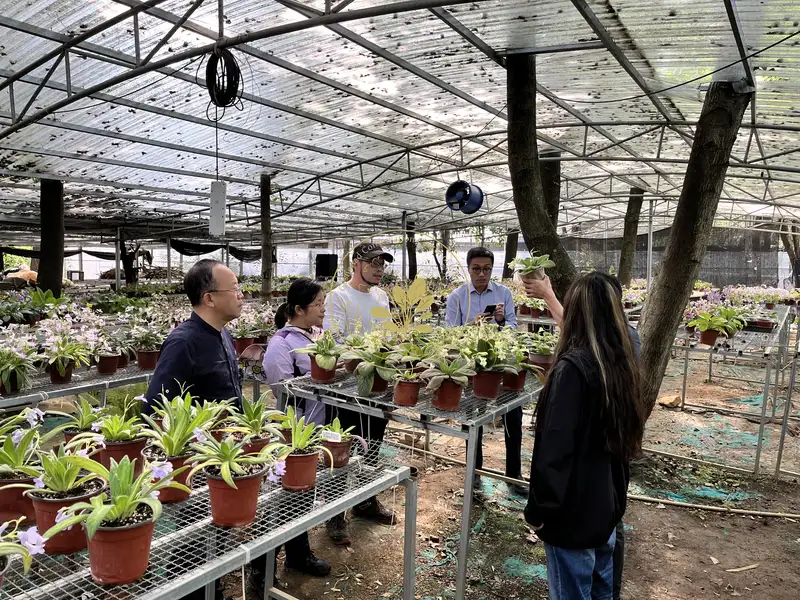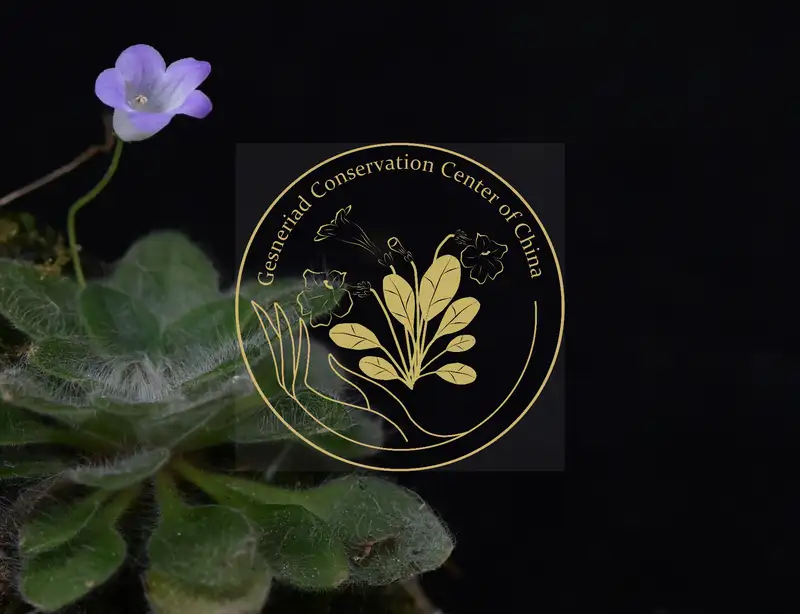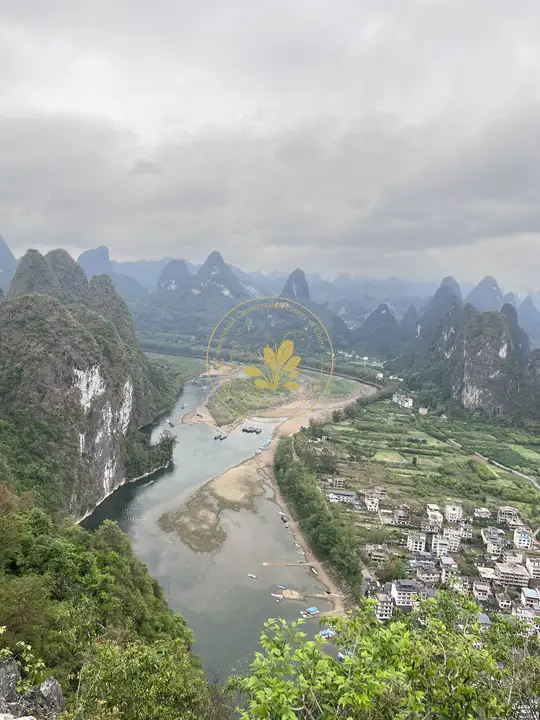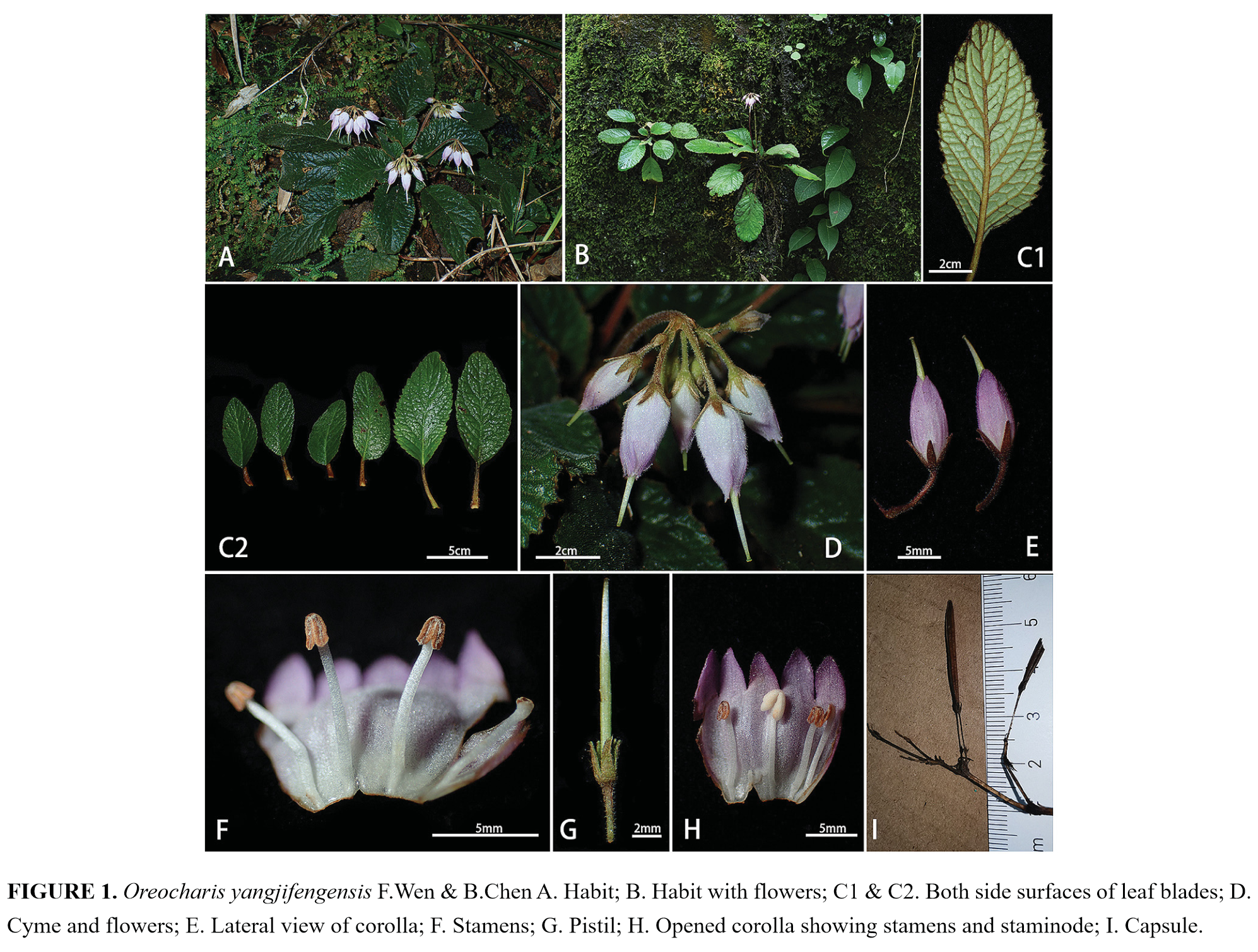No. 1 Jian Li, Xin Hong, Fang Wen & Li-Jiao Yan: Primulina pseudoroseoalba (Gesneriaceae), a new species from a karst cave in Guangxi, China
Ann. Bot. Fennici 51: 86–89.
ABSTRACT
Primulina pseudoroseoalba Jian Li, F. Wen & L.J. Yan , a new species of Gesneriaceae from China, is described and illustrated. It is morphologically similar to P. roseoalba, but differs in the leaf blade being broadly ovate to elliptic, and its margin entire and abaxially glabrous; peduncle bing much shortere; and bracts being ovate to orbicular-ovate, glabrous inside. P. pseudoroseoalba J is rare and currently known only from a karst hill in Guangxi, China.
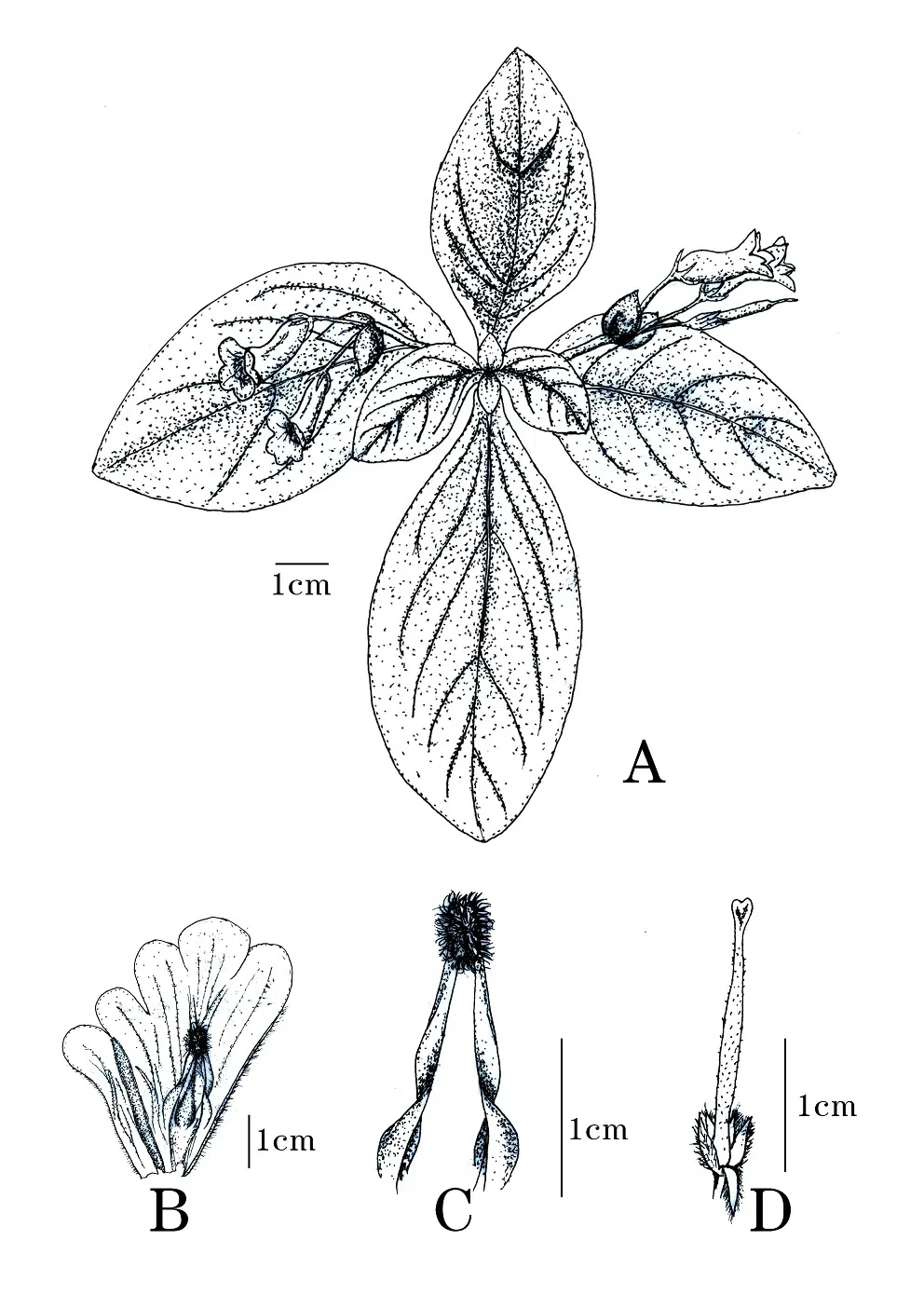
FIGURE 1. Primulina pseudoroseoalba (from the holotype, drawn by X.M. Xu). –A: Habit. –B: Corolla opened with stamens and staminodes. –C: Stamens and anthers. –D: Style, stigma and calyx lobes.
Based on morphological and molecular data, three new species of the Old World Didymocarpoid Gesneriaceae, Petrocodon laxicymosus, P. longgangensis and P. pseudocoriaceifolius, are described and illustrated from Guangxi, China. The three new species are most similar to P. coriaceifolius, differing by their texture, size, and shape of leaves, size and pubescence of inflorescence and corolla, anther shape, and pistil length. Additionally, Primulina guangxiensis, one of two species included in Primulina before its recent recircumscription, was unexpectedly found to be nested within Petrocodon in our ongoing phylogenetic analyses, prompting us to make the new combination Petrocodon guangxiensis. The four species of Petrocodon treated here are all rare, known only from a single or a few localities of limestone karsts in Guangxi. No. 3 Jing Tian, Xiao-Li Kong, Qiang Du, Gui-Zhi Zhang & Xun-Lin Yu: Three Newly Recorded Species of Primulina (Gesneriaceae) from Jiangxi Province Jiangxi Forestry Science and Technology 42(1): 37–38. ABSTRACT Three newly recorded species of Primulina (Gesneriaceae) from Jiangxi province, represented by P. xiuningensis (X.L. Liu & X.H. Guo) Mich. Möller & A. Weber, P. danxiaensis (W.B. Liao, S.S. Lin & R.J.Shen) W.B.Liao & K.F.Chung and P. depressa (Hook. f.) Mich. Möller & A. Weber were reported. P. xiuningensis was collected from Wuyuan county of Jiangxi province; P. danxiaensis was collected from Xingguo county and Ningdu county of Jiangxi province; P. depressa was collected from Dishuiyan of Guangfeng county of Jiangxi province. Above-mentioned content was cited from Tian et al., 2014.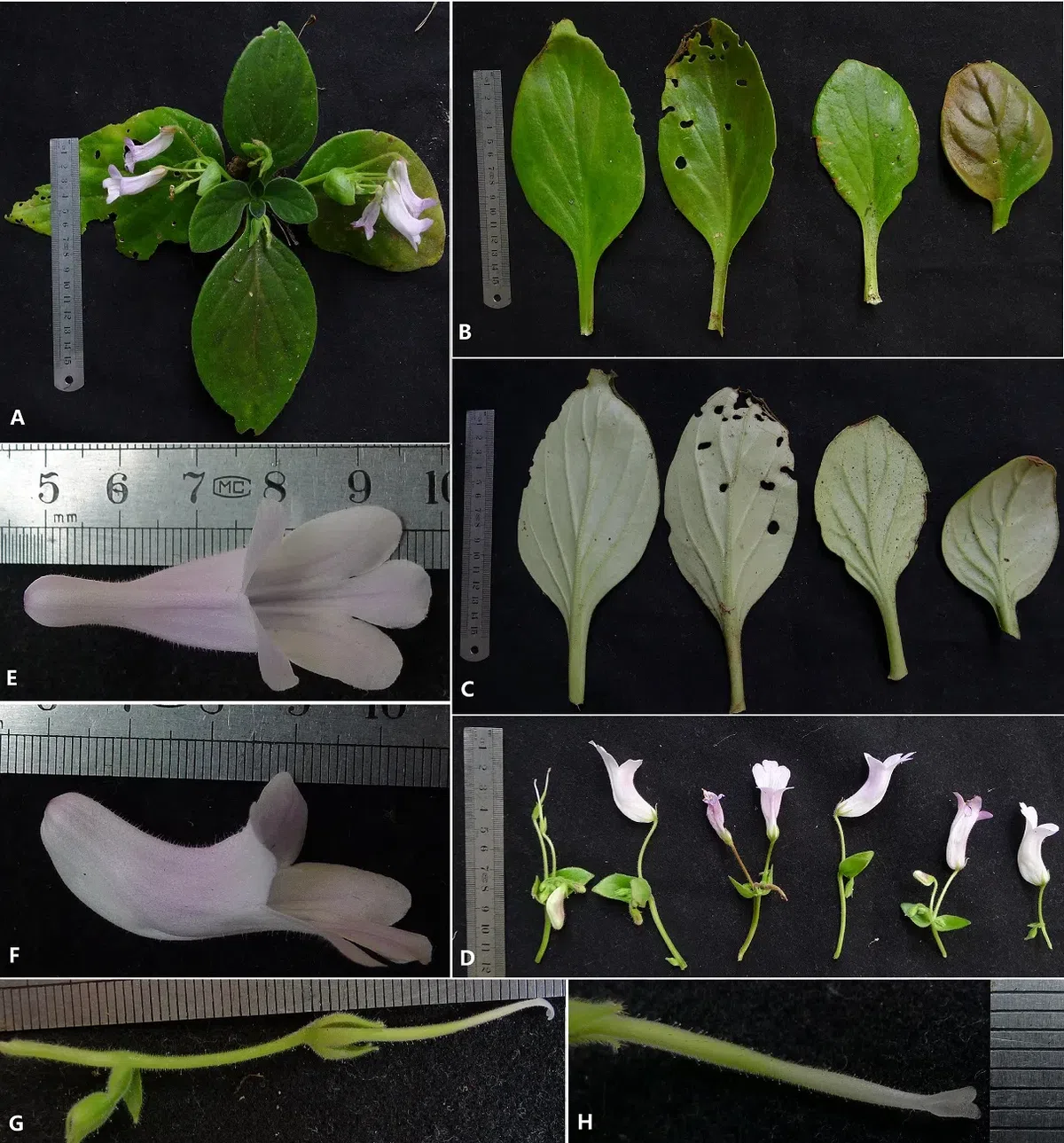
FIGURE 2. Primulina pseudoroseoalba. — A: Habit. — B: Adaxial leaves. — C: Abaxially leaves. — D: Cymes. — E: Top view of flower. — F: Lateral view of flower. — G: Cymes, calyx lobes and pistil. — H: Pistil and stigma.
Above-mentioned figures was cited from Li et al., 2014.
Where can you get this paper or available information? Please email to corresponding author.
、
No. 2 Wei-Bin Xu, Tao Meng, Qiang Zhang, Wang-Hui Wu,
Yan Liu & Kuo-Fang Chung: Petrocodon (Gesneriaceae) in the Limestone Karsts of Guangxi, China: Three New Species and a New Combination Based on Morphological and Molecular Evidence
Systematic Botany 39(3): 965–974.
ABSTRACT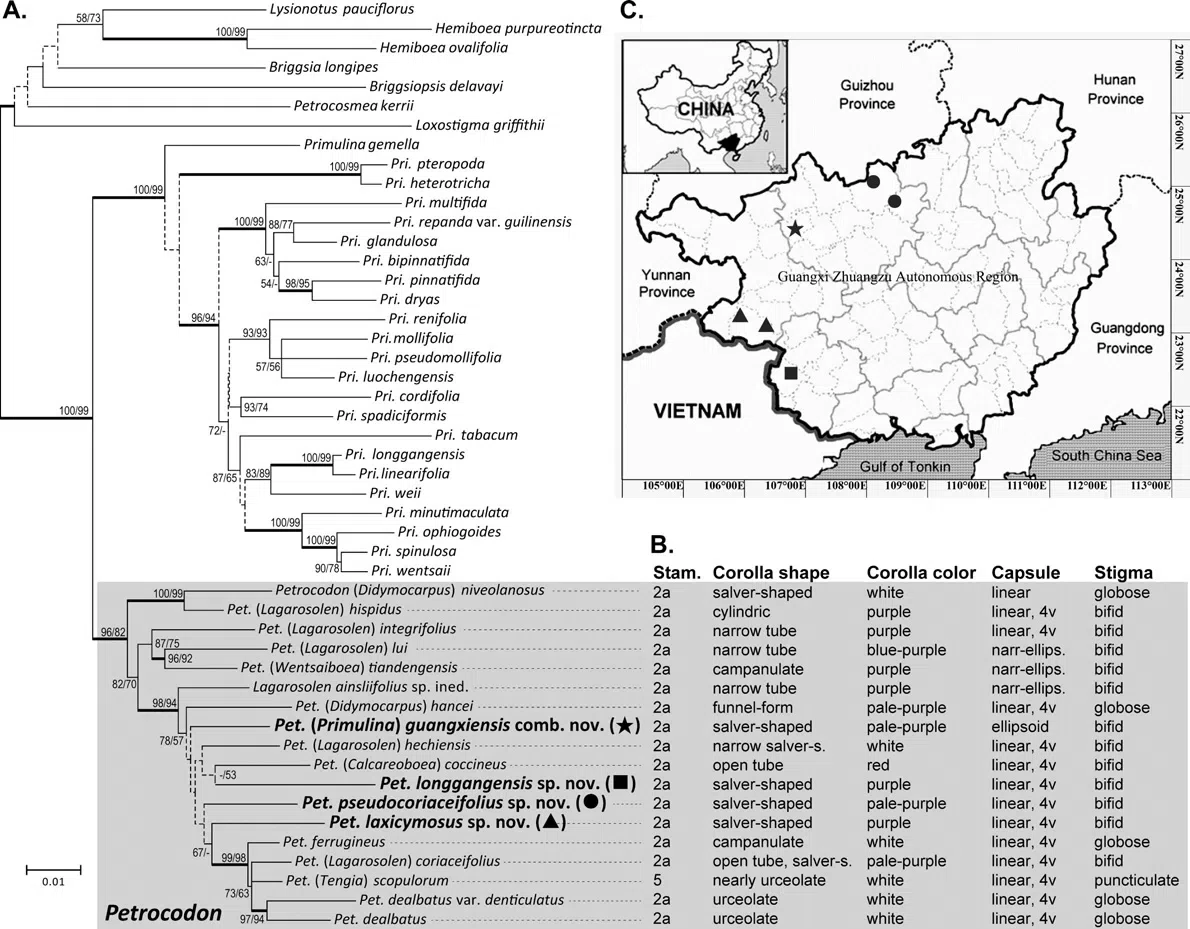
FIGURE 1. A. The best-scoring ML tree from one of the ten analyses of ITS and trnL-F sequence data. Phylogenetic placements of Petrocodon laxicymosus, P. longgangensis, P. pseudocoriaceifolius, and Primulina guangxiensis are highlighted. Bootstrap values (LB/PB) greater than 50% are shown. Thick lines denote a strongly supported clade with LB and/or PB greater than 95%. Dashed lines indicate clades collapsed in the majority rule consensus tree of MP analyses. B. Character states of Petrocodon clade modified from Fig. 1 of Weber et al. (2011a). Stam.: number of fertile stamens (a, anterior pair); 4v, dehiscing into 4 valves. C. Geographic distributions of P. laxicymosus (triangle), P. longgangensis (square), P. pseudocoriaceifolius (circle), and P. guangxiensis (star).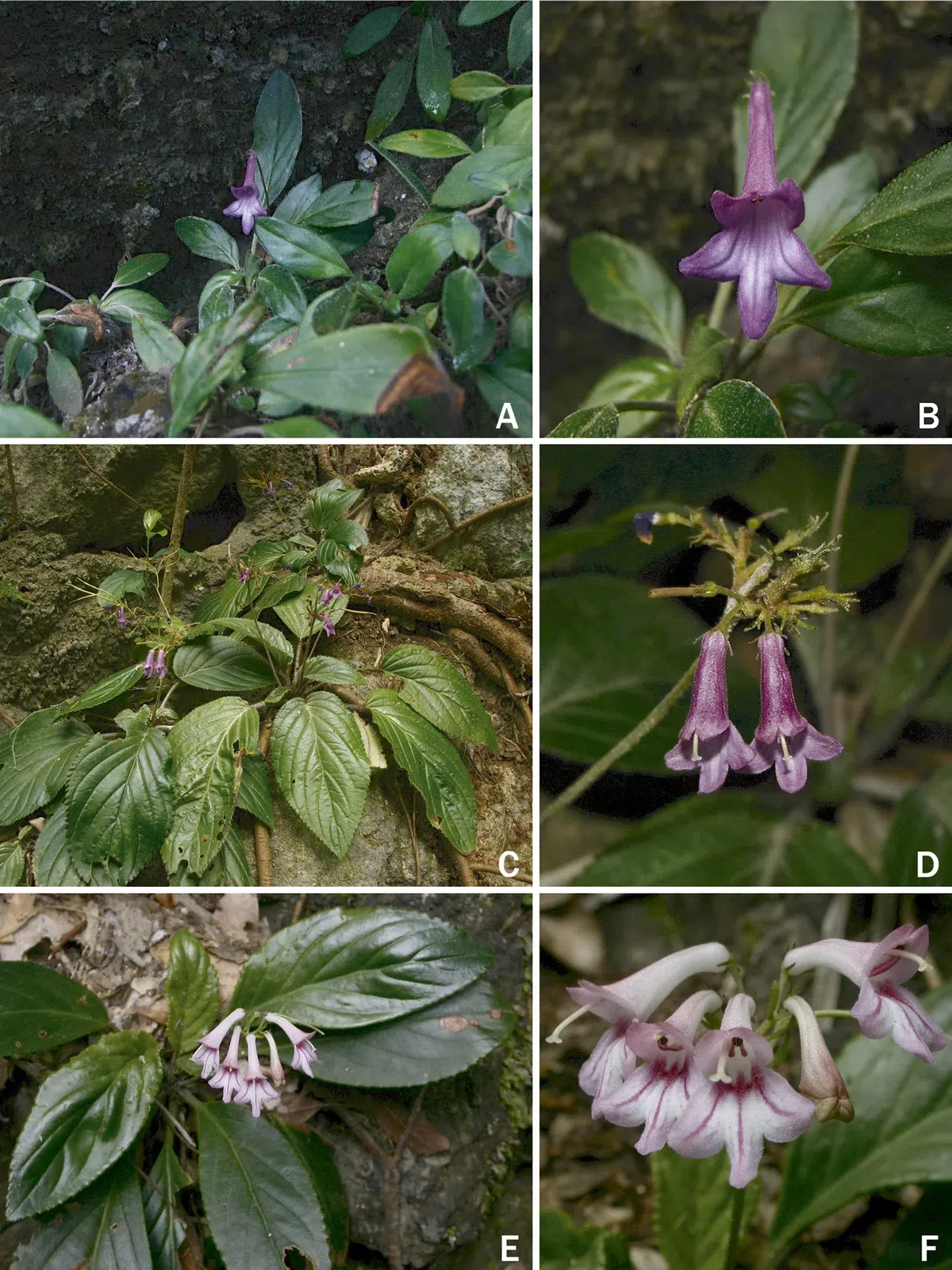
FIGURE 2. Photographs of the new species. A, B. Petrocodon laxicymosus. C, D. Petrocodon longgangensis. E, F. Petrocodon pseudocoriaceifolius.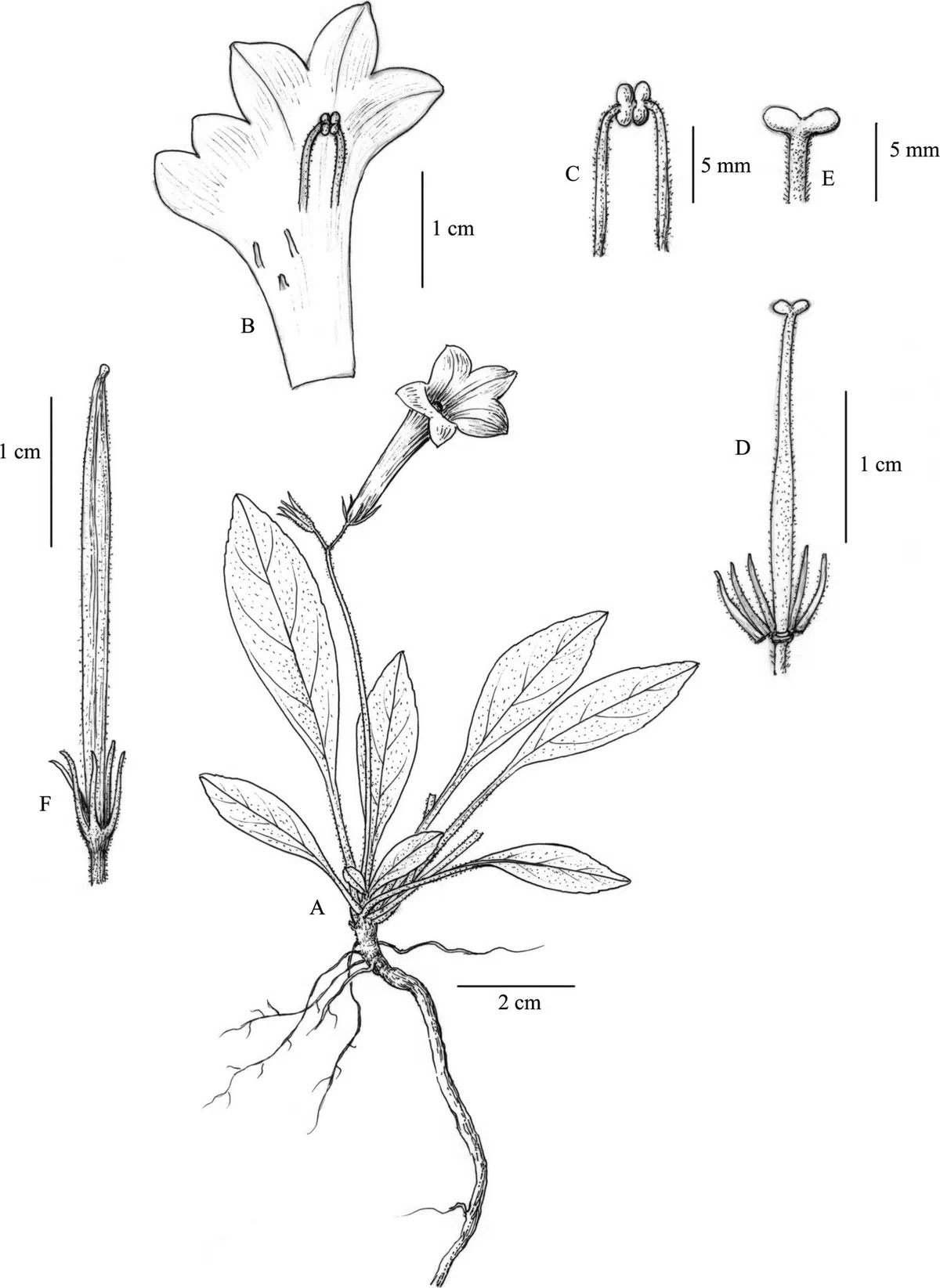
FIGURE 3. Petrocodon laxicymosus W. B. Xu & Yan Liu (Drawn by W.-H. Lin based on holotype). A. Habit. B. Corolla opened, showing stamens and staminodes. C. Stamens. D. Calyx and pistil. E. Stigma. F. Capsule.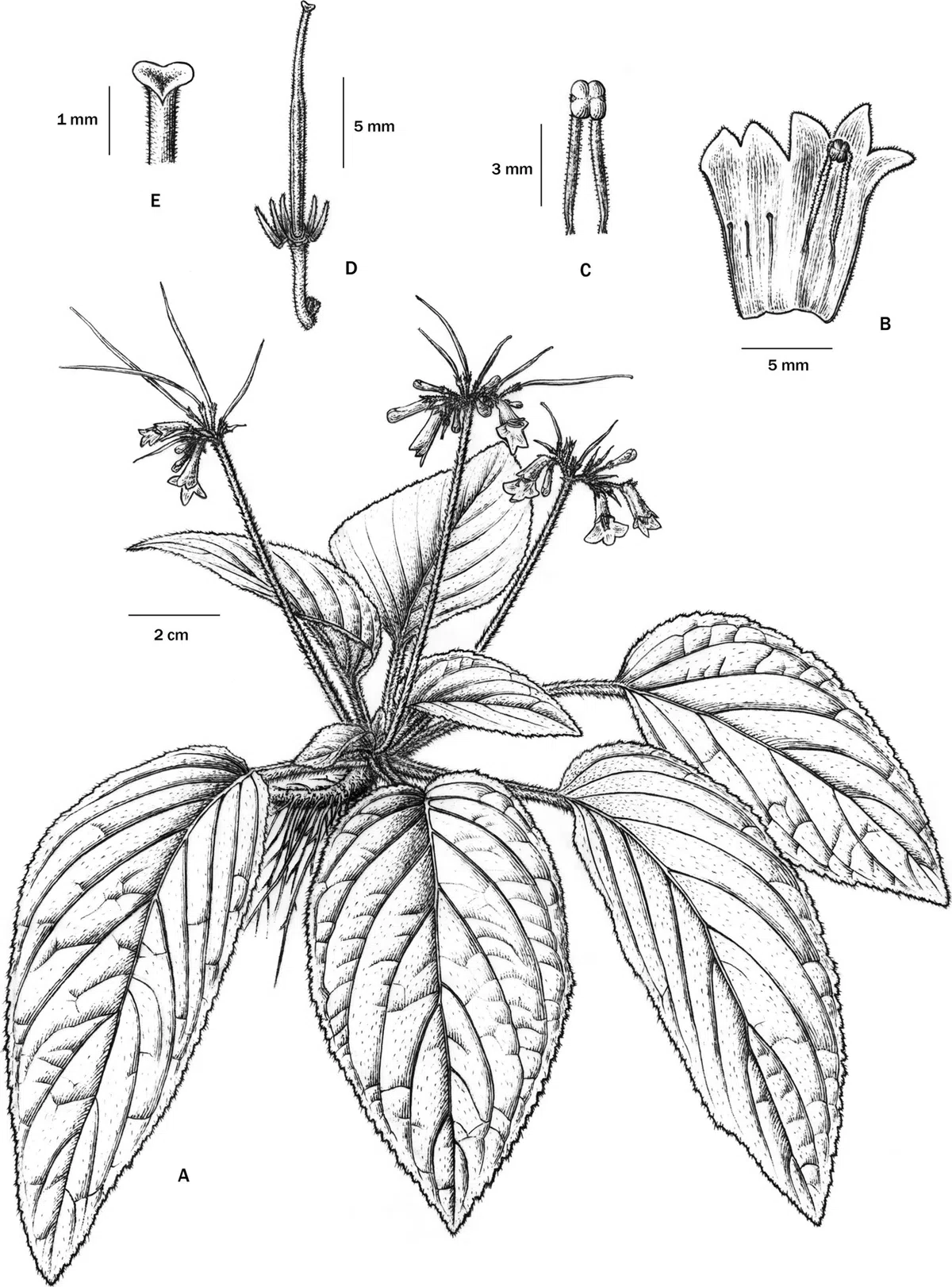
FIGURE 4. Petrocodon longgangensis W. H. Wu & W. B. Xu (Drawn by Y.-X. Zhu based on holotype). A. Habit. B. Corolla opened, showing stamens and staminodes. C. Stamens. D. Calyx and pistil. E. Stigma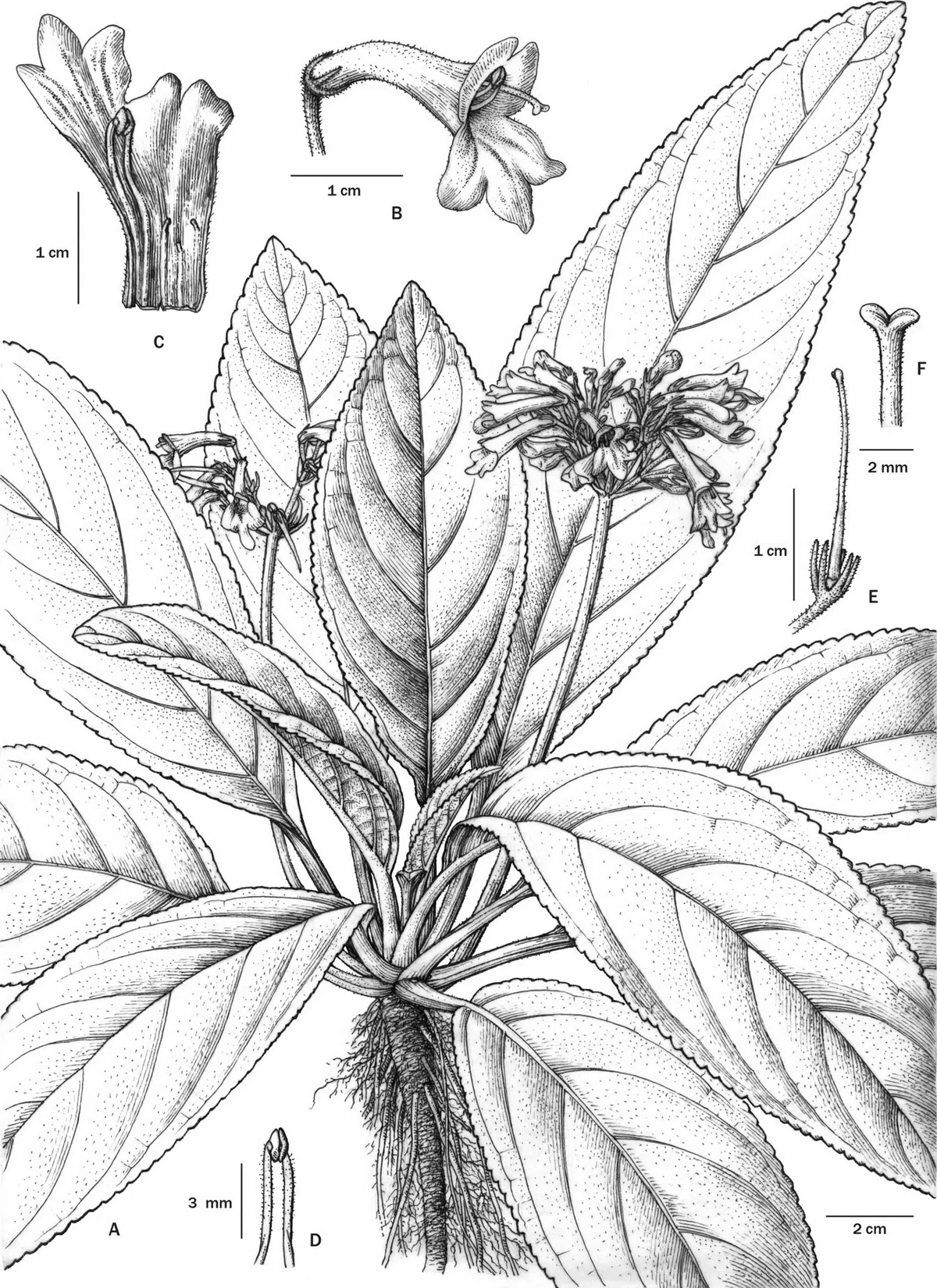
FIGURE 5. Petrocodon pseudocoriaceifolius Yan Liu & W. B. Xu (Drawn by S.-Q. He based on holotype). A. Habit. B. Flower. C. Corolla opened, showing stamens and staminodes. D. Stamens. E. Calyx and pistil. F. Stigma.
Above-mentioned figures and content was cited from Xu et al., 2014.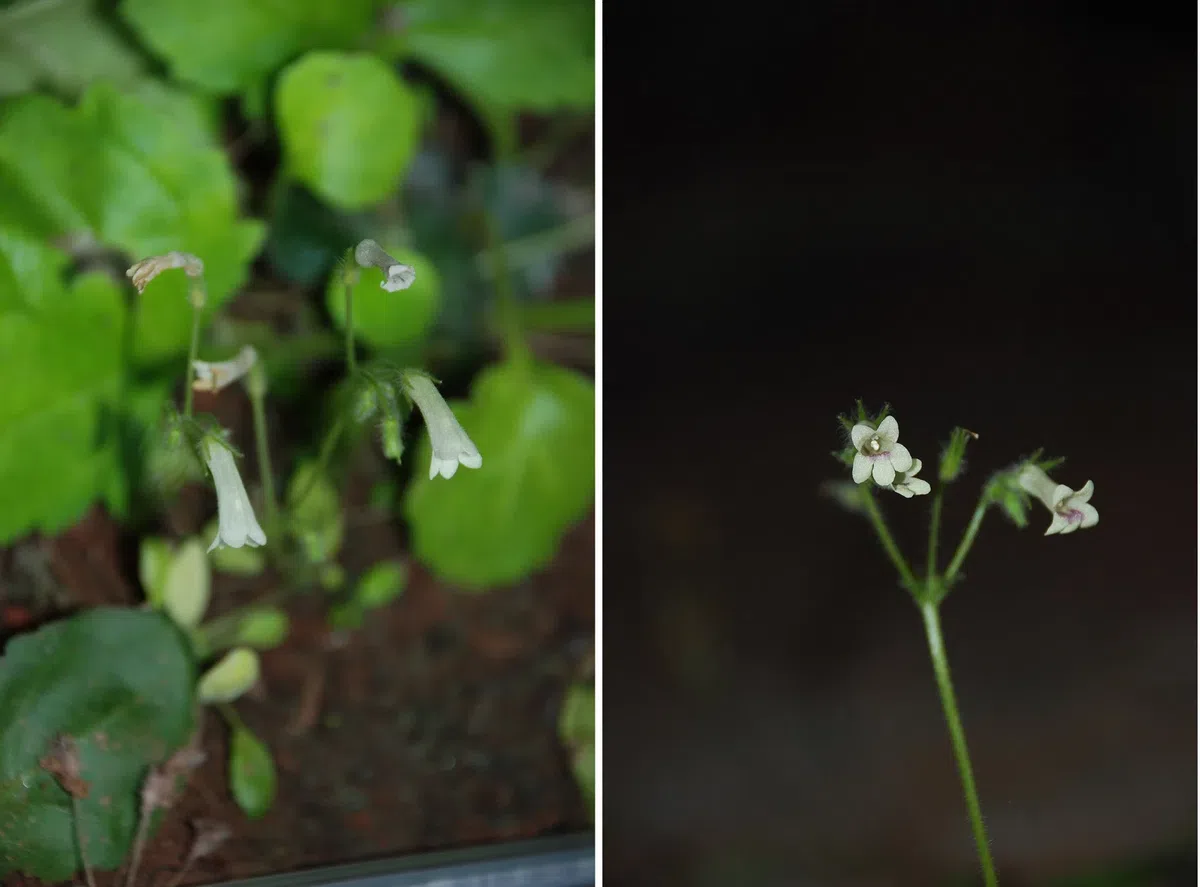
P. xiuningensis (X.L. Liu & X.H. Guo) Mich. Möller & A. Weber, Photographed by Xin Hong
Primulina danxiaensis (W.B. Liao, S.S. Lin & R.J.Shen) W.B.Liao & K.F.Chung, photpgraphed by Prof. Rui-Jiang Wang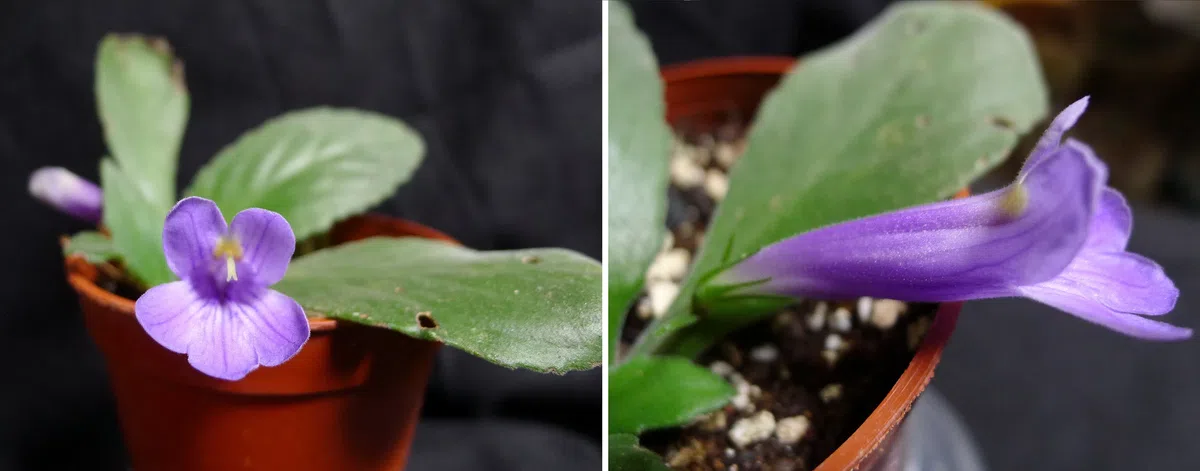
Primulina depressa (Hook. f.) Mich. Möller & A. Weber, photographed by Dr Fang Wen



